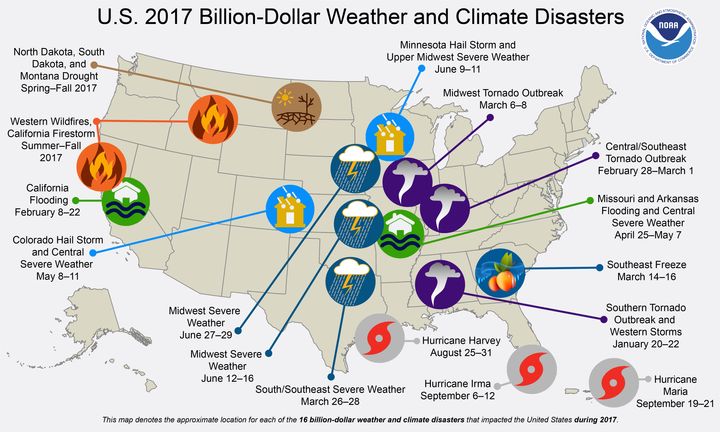Why would business leaders begin to pay close attention to climate change in 2018? Answer: Money.

For the first time in history, “climate change” is likely to appear in thousands of corporate required filings with the Securities and Exchange Commission (SEC). Supply chains, manufacturing processes, logistics, transportation, health; employee recruiting, engagement, and retention (and more, depending on the business you’re in) are all impacted in ways that are now quantified as exposure, risk, and expenses.
“The hurricane trio of Harvey, Irma and Maria will cost the insurance industry a record amount in 2017: the final insurance bill for those and other natural catastrophes, including a severe earthquake in Mexico, is expected to come to US$ 135bn – higher than ever before. Overall losses amounted to US$ 330bn, the second-highest figure ever recorded for natural disasters.” —1/4/18 Report from Munich Re, the world’s largest reinsurer.

Among financial markets a solid consensus has emerged that long-term financial stability requires thoughtful shifts to a lower-carbon economy. It's the only intelligent path forward.
The movement to properly account for climate-related risks is sound corporate governance policy; detractors are dwindling as the data mounts. Of course investors want to know that their portfolio companies are offering transparency on the risks of a warming planet. Of course they want to be confident that CEOs are acting strategically on the emerging vulnerabilities and opportunities posed by a changing climate. Naturally, employees and customers also want this assurance.
Ask a chief executive, his board, or their accountants what these costs signal this year, and you may hear the words Climate-related Financial Disclosures, or CFDs. Famously exemplified by the 62% Exxon-Mobil shareholders’ vote for a climate resolution in June, major institutional investors like BlackRock, Fidelity, State Street, and Vanguard are beginning to insist on answers to questions like these:
· How is the business model developing resiliency against a changing climate?
· What are the physical impacts on financial assets likely to be?
· What are the liability risks associated with extreme-weather damages, which are increasing year after year?
· What are the potential security issues to financial stability?
· Have chief executives determined the risks of transitioning to a lower-carbon economy?
· Is a plan in place to achieve that transition, and is it acceptable to stakeholders?
· Do employees have a basic understanding of the business risks associated with climate change and what their company is doing in response?
During the tumultuous storm season of 2017, in September climate-solutions financier Michael Bloomberg and Mark Carney, the Governor of the Bank of England, calmly announced a coalition of public companies committed to follow a set of new recommendations on CFDs to deal with the catastrophic “mega risks” posed by climate change.
By year-end the number of involved companies had grown from 10 to 237, with combined market capitalization of $6.3 Trillion. The coalition “includes 20 of 30 globally-systemically important banks, eight out of ten of the largest asset managers and many leading insurance companies and pension funds, together responsible for assets of over $81.7 trillion,” announces Carney, who is also the chair of the Financial Stability Board.
For more, follow the Task Force on Climate-related Financial Disclosures via Twitter @FSB_TCFD and on LinkedIn. Look at the Sustainability Accounting Standards Board (SASB). Consult the Global Reporting Initiative (GRI) and the Principles for Responsible Investment (PRI). Pay attention to Climate Action 100+ organized by Ceres and others. Read the WBCSD “CEO Guide to climate-related financial disclosures.” Schedule a meeting on this with your accountants.
One final recommendation for now. Take 30 minutes to watch Mark Carney deliver “Breaking the tragedy of the horizon: Climate and Financial Stability,” his address at Lloyd’s of London, ahead of the COP21 talks in Paris.
